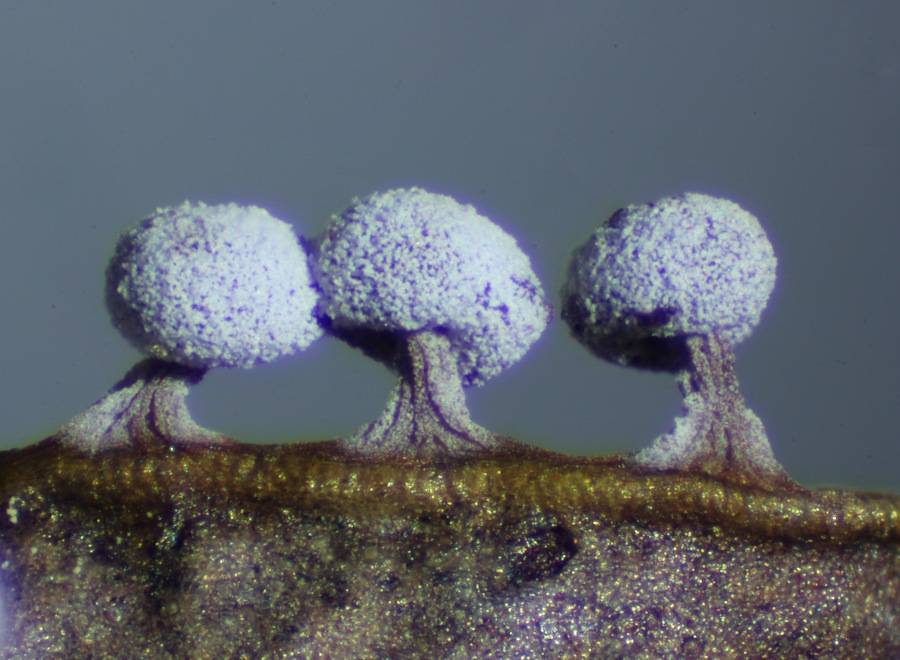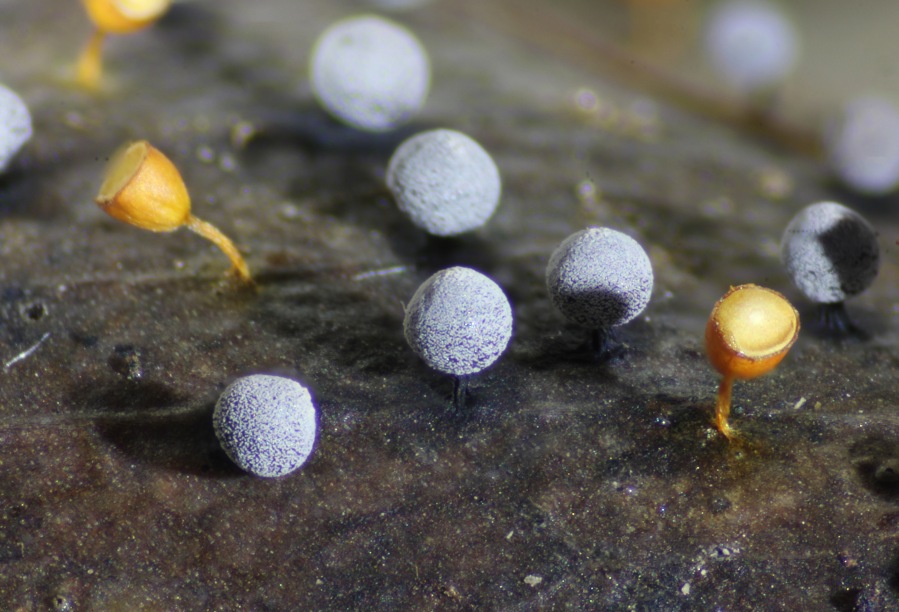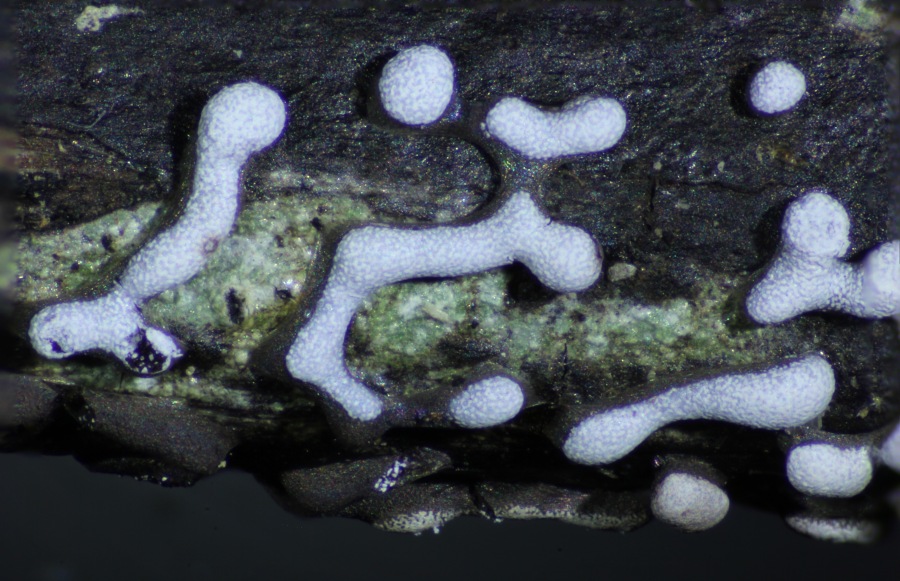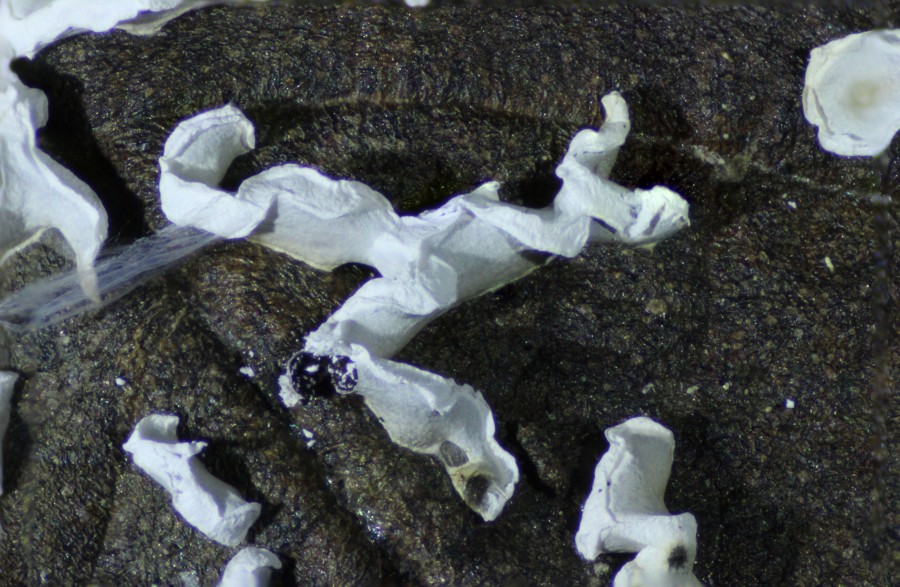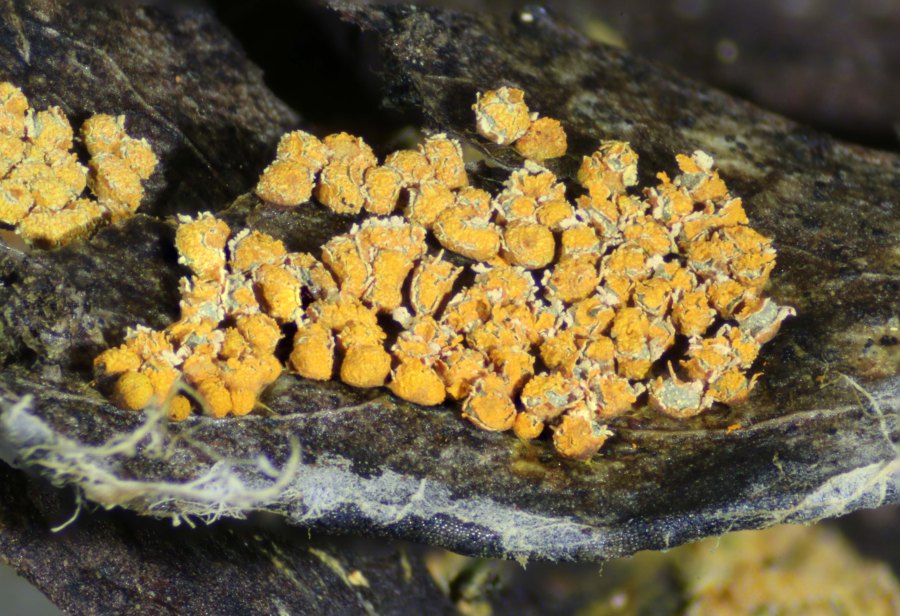Treeferns (Dicksonia antarctica) are common in Tasmania in the rainforest, wet eucalypt forests and in sheltered gullies in drier forests. They sometimes attain great heights of around 12 metres but at Black Sugarloaf they are between one to two metres tall and therefore an ideal height to inspect.
Over the decades leaves, twigs and branches fall from the forest canopy and accumulate among the fronds. On rainy days plasmodia creep through the fallen litter and up the stems. A few days after rain in May and June, I often see masses of sporangia of the goblet-shaped Craterium minutum and the stalked sporangia of Didymium clavus, D. squamulosum and D. nigripes. I also find these species on leaves that have fallen on logs and stumps.
The two photographs below were taken during a wet August in 2018. The plasmodia were in the same plant but on two different stalks. The pink plasmodium was white the following day and I didn’t find associated fruiting bodies. The orange yellow plasmodium transformed to a Diderma without an external peridium and with a yellow columella. It is yet to be identified.
Interestingly, some treeferns can have numerous species, while others alongside can have none. For instance, on May 24 2017 I saw a mass fruiting of Craterium minutum. Like most slime moulds, its sporangia were evenly spaced on the fern fronds, leaves, twigs and pieces of bark with 1-1.5 mm between each one. This allowed me to make some rough calculations and I estimate there are more than 3,500 sporangia in the litter. Judging by their colour, it looks like the sporangia appeared in three flushes: 1100 brown sporangia probably appeared a day or so before May 24; the May 24 flush had about 1250 sporangia; and a fresh flush of about 1050 appeared on 26 May 2017.
On May 26 from the same treefern I collected Didymium clavus and Didymium squamulosum and noticed among the fresh flush of Craterium some immature fruiting bodies of what I thought was D. squamulosum. After inspecting the leaf, I realised that the black stalk was that of D. melanospermum (D. squamulosum has a whitish stalk).
A few weeks later in another treefern I found another two species, Physarum bitectum and Physarum bivalve, both of which are new additions to my species list.
In early July another species, Physarum contextum, appeared on litter in two treeferns about 10 meters apart.
I’ve found that the most productive ferns are those under a canopy of eucalypts, blackwoods and dogwoods whose leaves, sticks and bark accumulate among the fronds. These ferns grow on a damp, shaded hillside so a strong torch or headlamp is essential to see them. The treeferns in the paperbark (Melaleuca ericifolia) swamp forest are not as productive, possibly because paperbarks have tiny leaves and they don’t regularly shed limbs.
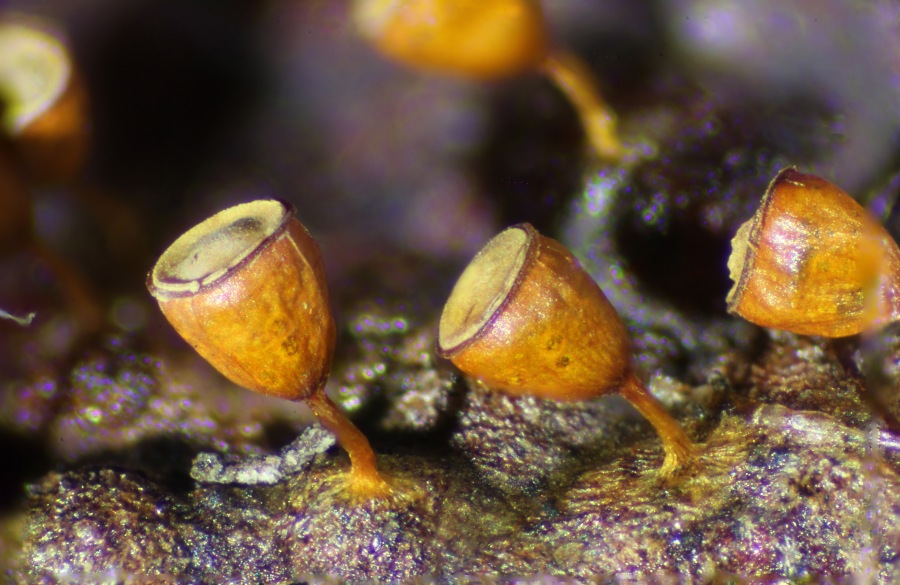
Craterium minutum
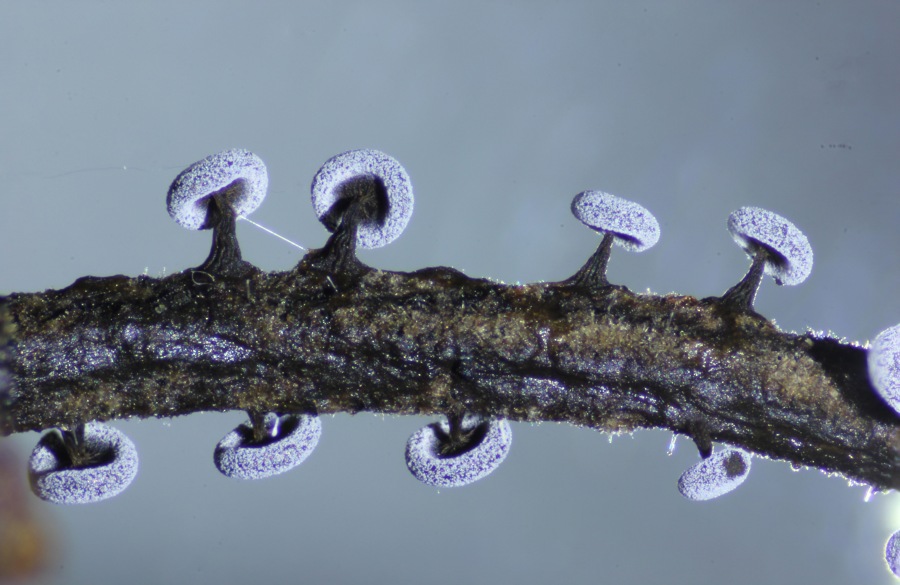
Didymium clavus
